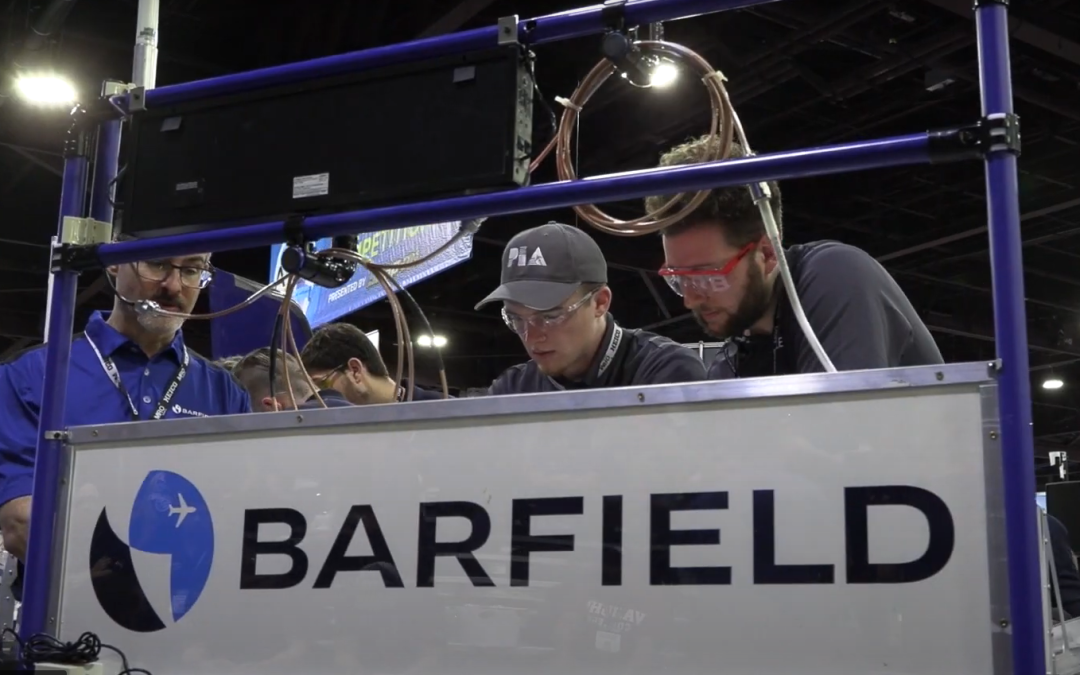
Ground Support Test Equipment, MRO Services
DPS1000 Barfield[/caption]The Aerospace Maintenance Competition is back in 2023, and this time Barfield will be participating with the following benches.
Find below information to prepare you for the competition.
Air Data Testing
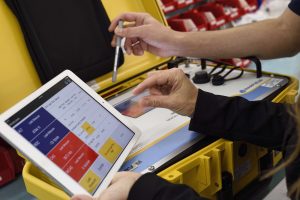
For Air Data Testing participants will be working with a DPS1000. The The DPS1000 is Barfield’s latest fully automated, user-friendlyRVSM compliant air data test set. The DPS1000 performs altimeter and static systems tests and inspections. Critical components used in the DPS1000 have a well established history of proven flight line accuracy including pumps, valves and static/altitude transducers.
Check the DPS1000 procedure here
Intermittent Fault Detector
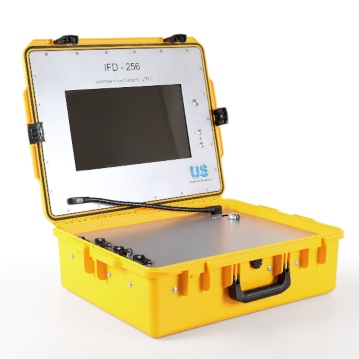
Avionics technicians often are faced with the uncertainty when troubleshooting to decide where the root of the problem is loicated in complex wire harnesses.
Barfield in partnership with Universal Synaptics, the industry leader in detecting and isolating elusive intermittent faults, will have a bench to troubleshoot with IFD-512.
These are some articles and training videos that help understand the use of this tool:

Ground Support Test Equipment, MRO Services
REVISED VERSION
The Aerospace Maintenance Competition is back, and this time Barfield will be participating with 3 test benches.
Find below information to prepare you for the competition.
Air Data Testing

For Air Data Testing participants will be working with a DPS500NG. The DPS500NG is Barfield’s latest fully automated, intuitive RVSM compliant air data test set. The DPS500NG is a portable, high precision, dual channel air data pressure test system. This tester is designed to calibrate, test and troubleshoot air data instrumentation and aircraft pitot-static systems. The test set has been designed with functional and reliability features highly suited to withstand the harsh environmental and demanding conditions of the flight line environment. The test set is designed for testing a wide range of commercial and military aircraft, both rotary and fixed wing. Designed with both hardware and software safety features, the DPS500NG provides maximum protection for the test set and the Unit Under Test (UUT). These features include over-range, overlimit, and over-pressurization protection, micro-porous filters, pressure relief valves, UUT isolation in the event of a power failure and more
Check the DPS500NG procedure here
Bonding

Proper electrical bonding and grounding is critical for aviation operations. This year Barfield released its latest product the BT-700 and BT-700i (intrinsically safe). The Barfield Bond Meter Series are designed with the clearest and most informative displays for mistake-free usage. They quickly produce accurate readings to reduce the time spent measuring. The unique low-power techniques avoid the hassle of power cords or battery chargers. The BT-700/BT-700i will run for 100 hours on 3 standard AA batteries and has auto power-off to preserve them. Probes are often more important than the instrument. This year participants will have the opportunity to work with a Kelvin Clip Probe and a Big Kelvin Display Probe.
The blog post How The Next Generation of Bond Meters Are Helping Aviation Technicians? incorporates videos of how to use the bond meter. The Barfield Bond Meter Quick Start Guide is also a very helpful tool to learn how to use it.
Check the BT700 procedure here (revised version)
RF Antenna Testing

Avionics technicians often are faced with the uncertainty when troubleshooting to decide if the problem is the avionics Line Replaceable Unit (LRU) or the coaxial connection from the LRU to the antenna.
The FlightHawk is a tool that helps avionics professionals mitigate the problem by testing the coaxial connection from the LRU to the antenna. It has two main functionalities:
- Distance to Fault
- Measuring the VSWR (Voltage Standing Wave Ratio) to determine the energy reflection form the antenna
- Some kits come with a power sensor and a terminal load, that allow for testing the power coming out of the LRU. Thus, converting the FlightHawk into a Power Meter
These are some articles and training videos that help understand the use of this tool:
Check the RF Antenna Testing Procedure here

Ground Support Test Equipment
Every avionics technician understands the importance of proper grounding to prevent damages to the instruments, especially if hit by lightning.
Bond meters are a special tool used in aviation to measure low resistance. Their purpose is to measure proper bonding and aircraft grounds. Thus, minimizing damages of expensive and complex systems; increasing aviation safety.
Why not use a multimeter to measure grounds?
It seems ubiquitous to use a multimeter also to measure grounds, but the range of a standard multimeter may not meet many aviation requirements.
A standard multimeter can only measure resistance as low as 0.1Ω that is 100mΩ.
This is not enough!
Some aircraft manuals require 2.5 milliohms (2.5mΩ) for correct ground measurement. If using the standard multimeter, the measurement is 40 times higher than required by the manual!!!
What is The Difference Between a Bond Meter and a Multimeter?
The multimeter can measure resistance, capacitance, voltages, and current. When measuring low resistance, a standard multimeter is limited by the level of range and the introduction of additional resistance from the pair of leads. The additional resistance is caused by the 2-wire measurement method as shown below.
A 4-wire measurement, also called a 4-wire Kelvin testing, provides the proper ground measurement as follows:
Out of the four (4) wires, two (2) provide the current to the Device Under Test (DUT), and the other two (2) measure the voltage over the DUT.
This way, the measurement is taken exactly between the desired points. Thus, eliminating the added resistance from the standard pair of leads used in the multimeter.
What makes the BT-700 and BT-700i unique?
The BT-700 and BT-700i (intrinsically safe) offer some great features in comparison with legacy bond meters.
- Durable, versatile with intuitive user-interface.
- Battery life of 100 hours in standby, 50 hours in 10 mΩ range*
- Four and one-half (4½) digit LCD with LED Backlight
- Easy to clean
- Automatic and manual HOLD modes
- Programmable test limits with OK and FAIL annunciator
- OVER and UNDER annunciators
- Open lead and DUT (Device Under Test) detection
- Durable: Meets MIL-PRF-28800F, Class 2 requirements
- Optional Tilt Stand/Magnet/Hanger
*Factors such as range, backlight, and use of the optional display probe will affect battery life.
** Images sourced from cirris.com.
Display Probes With a Hold Mode?
This unique feature allows an aviation technician to read a measurement at the fingertips, with the option to hold the value and see have an annunciator button set to the right threshold.
Just imagine how fast measurements of grounds throughout the aircraft can be taken. Just set the threshold, and start measuring
If you are interested to learn more about it? Download the manual below
Fill this form to download it.










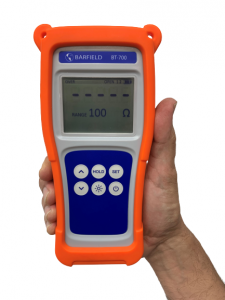

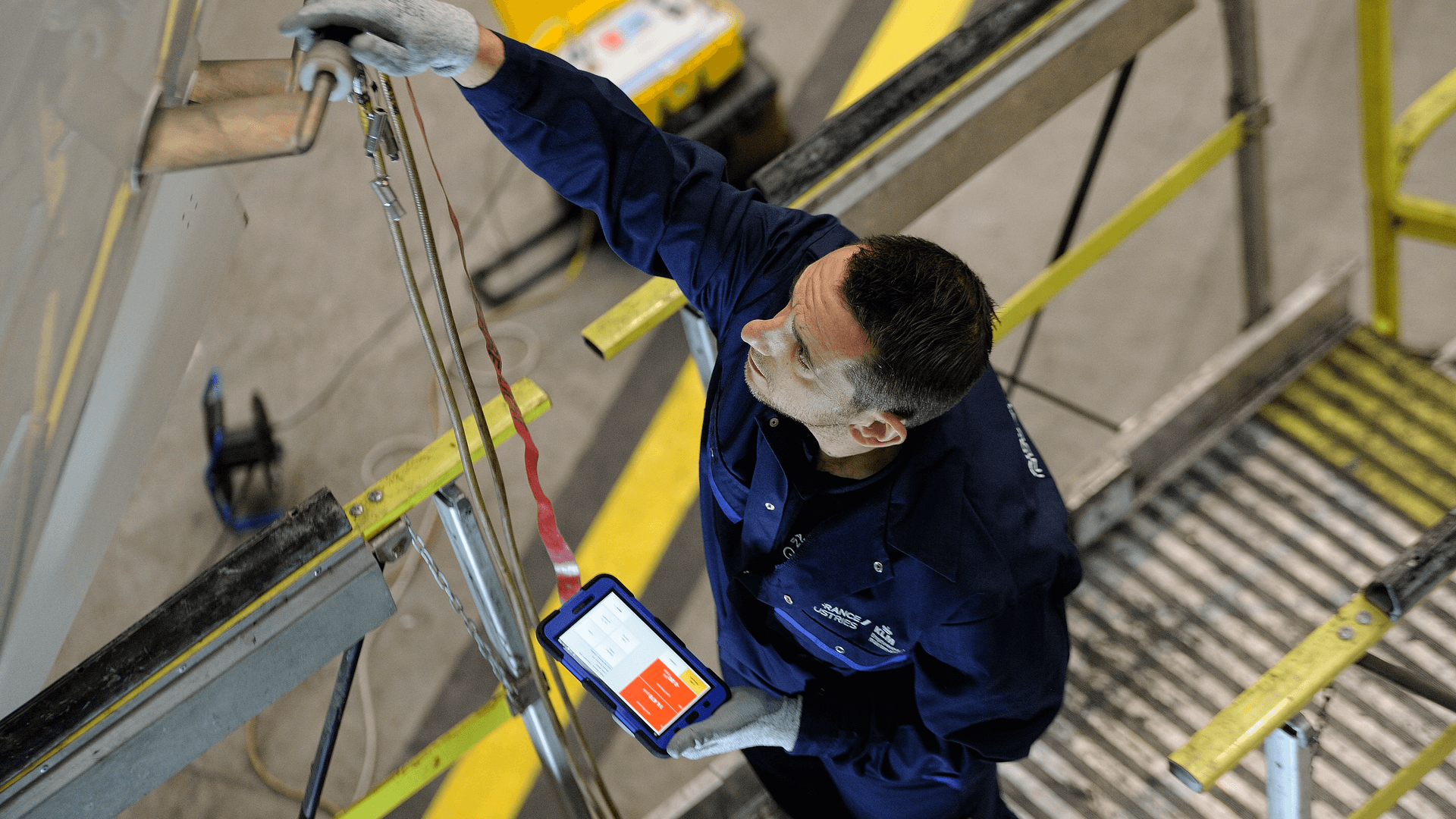
Recent Comments